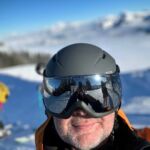This year I have tried to grow professionally by embracing The Framework for Maker-Centered Learning called Agency by Design.
Agency by Design (AbD) is an ongoing research initiative at Project Zero investigating the promises, practices, and pedagogies of maker-centered learning experiences. Maker-centered learning offers learners multiple ways to think critically and engage with the designed world.
About Agency by Design – http://www.agencybydesign.org/node/333
This has led me to investigate and research my own practice, a type of action research if you will, through the lens of this framework
This framework aims to empower learners by combining maker-centered learning with design thinking. The Agency by Desing (AbD) describes the three interrelated capacities that help learners develop a sensitivity to design: Looking Closely, Exploring Complexity, and Finding Opportunity.
Understanding the Learning Space
In my previous posts, I have described how to design the space to be a collaborative space and how to design the classroom to be responsive to individual needs.


This time we are using the Agency by Design framework to Co-create our learning space. The three tools I use are A CAPACITY OF SENSITIVITY TO DESIGN
1. LOOKING CLOSELY
is about close, careful and sustained observation. It involves using any and all of the senses to fully notice what’s there. It often involves noticing all the parts of things and how those parts interact. It almost always means taking the time to go beyond first impressions.
2. EXPLORING COMPLEXITY
is about illustrating and exploring the multiple ways that things, ideas, and systems can be complex. It goes beyond observation to investigate how things work in the world, how they connect to larger systems, and how they can be explored and understood from different perspectives.
3. FINDING OPPORTUNITY
is about envisioning designs, redesigns, inventions, and hacks. It involves imagining how things and systems could be changed, reframed, reworked, or repurposed. It often unfolds through prototyping, tinkering, and making and revising plans.
Using these observation tools I was able to really focus on evidencing and documenting the process and creating actionable feedback. With this type of action research, I was able to also reflect on my role as a teacher and start thinking more like a learning designer. One of the major takeaways from early on was that I now had a purpose, I had a role even though I was stepping back from the action.
The second set of tools that I used were the student resources and the visible thinking routines like Parts, Purposes, Complexities and Parts, Perspectives, Me (I have included them here as Formatives).
- https://app.formative.com/clone/CJNQE7?_rid=uaocpo
- https://app.formative.com/clone/VVD2WM?_rid=687x2u
Voice and Choice Learner Workbook
Voice-and-Choice-Learner-WorkbookArmed with enthusiasm, new understandings, and most importantly: tools to record and document what is happening in our learning environment. Using the tools has given me a completely new ways to support student agency by using observational data by seeking to answer the following questions:
- What MOVES are learners making? (sometimes it’s best to focus on observing just one or two moves)
- What is the learner/group doing that shows the move in action?
- What is strong or striking about the learner/group’s experience?
This data has then allowed me to notice the student behavior, and patterns, and given voice to learners without words.









